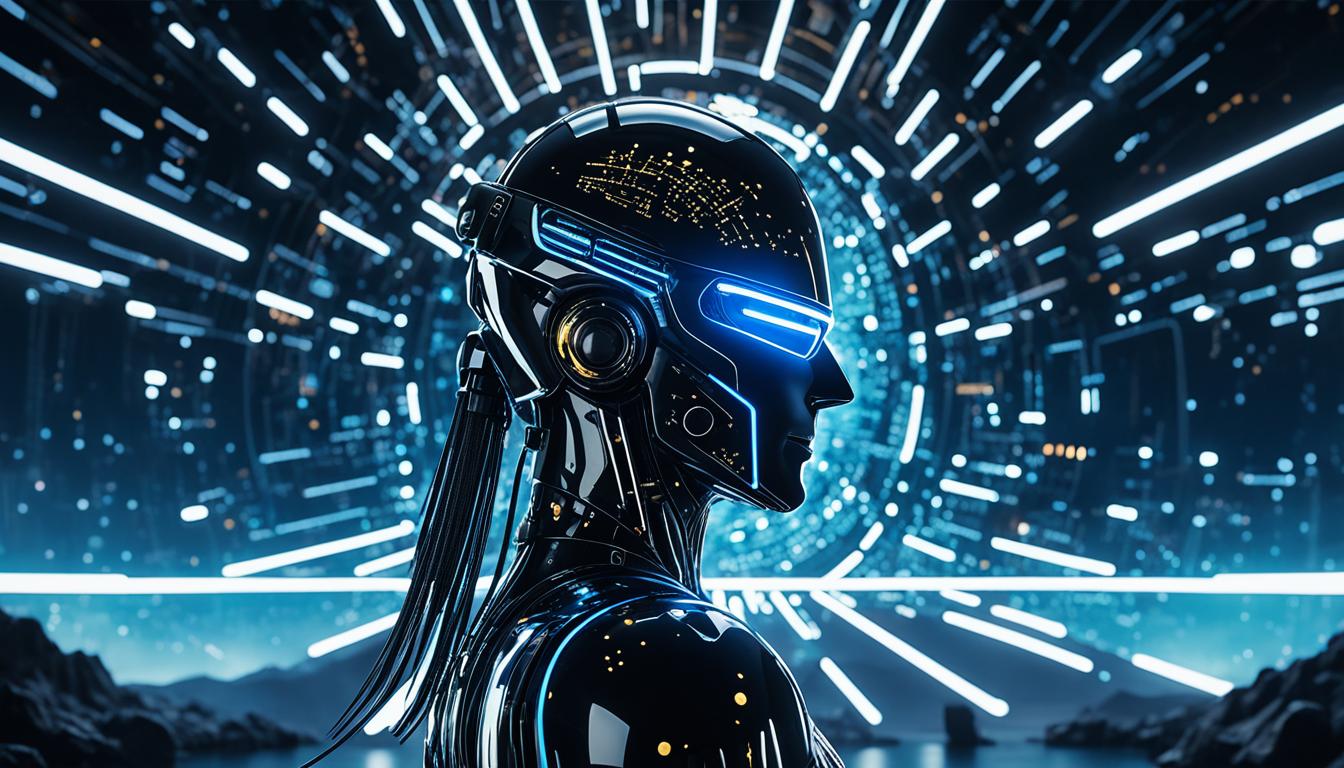Explore the vision of the YouTube CEO, where exciting advances in technology are right on the horizon.
The fusion of AI and creativity is reshaping the landscape, offering limitless possibilities.
From strategic partnerships to cutting-edge experiments, YouTube is paving the way for a new era of innovation and artistic expression.
Creators are driving this evolution, crafting captivating narratives and expanding their global reach.
With a focus on community protection and growth, YouTube's commitment to shaping the future of entertainment is evident.
Join us as we uncover the layers of innovation that lie ahead in the digital realm.
Key Takeaways
- AI-driven creativity tools will continue to empower innovation.
- Creator support and community collaboration are key focuses.
- Expansion into living room entertainment and subscriptions drives growth.
- Commitment to partnerships, protection, and future strategies for a thriving YouTube community.
AI Integration for Enhanced Creativity
Utilizing cutting-edge AI tools, YouTube revolutionizes creativity by enhancing the creative process and fostering innovation through experiments like Dream Screen and Music AI Incubator. AI-driven inspiration sparks new ideas while offering creative collaboration opportunities.
By leveraging artificial intelligence, creators can explore uncharted territories and push the boundaries of traditional content creation. The synergy between human ingenuity and AI capabilities opens doors to unprecedented levels of artistic expression.
Through platforms like Shorts, creators can engage in cultural moments with ease, reaching wider audiences and propelling their work to new heights. These AI advancements not only streamline the creative workflow but also encourage experimentation and evolution within the creative community, paving the way for a future where innovation knows no bounds.
Empowering Creators and Entertainment

In empowering creators and shaping the landscape of entertainment, YouTube champions innovative storytelling and collaborative initiatives with global influencers. Creator empowerment and storytelling evolution are at the core of YouTube's mission. By redefining entertainment through top-notch storytelling, creators are expanding their audience reach and engaging viewers in new and exciting ways. Through partnerships with world leaders, YouTube supports creators in diversifying revenue streams, ensuring their economic sustainability. Initiatives like the Creator Collective foster community and collaboration, recognizing the value creators bring to the entertainment industry. This commitment to empowering creators and driving entertainment redefinition ensures a dynamic and thriving ecosystem where creativity flourishes alongside revenue diversification.
| Empowerment Initiatives | Collaboration | Revenue Streams |
|---|---|---|
| Creator Collective | Partnerships with influencers | Diversification strategies |
| Storytelling workshops | Global collaborative projects | Monetization opportunities |
| Community engagement events | Audience expansion efforts | Sponsorship programs |
| Skill-building resources | Co-creation opportunities | Merchandise partnerships |
| Creative freedom campaigns | Cross-platform promotions | Ad revenue optimization |
YouTube's Living Room Expansion
Moving from the realm of empowering creators and shaping entertainment, YouTube's Living Room Expansion marks a significant shift towards enhancing the viewing experience on larger screens.
The Living Room Experience is tailored to captivate viewers on TVs, where over 1 billion hours of YouTube content are consumed daily. Notably, top creators witness a 400% surge in watchtime on the big screen, emphasizing the growing importance of this platform.
YouTube optimizes various content, including Shorts and sports, to engage audiences in this immersive setting. This strategic focus on Viewer Engagement has contributed to the success of YouTube TV, boasting over 8 million subscribers, and Music/Premium, with over 100 million subscribers.
The expansion into living rooms signifies YouTube's commitment to delivering high-quality entertainment on a grander scale.
Growth Through Subscriptions and Partnerships

Enhancing its growth trajectory, YouTube's expansion through subscriptions and partnerships has been a pivotal strategy in solidifying its presence in the digital entertainment landscape. Subscription growth has propelled YouTube TV to over 8 million subscribers, while Music/Premium has amassed over 100 million subscribers. These numbers underscore the platform's ability to attract and retain paying customers.
Strategic partnerships have also played a crucial role, with revenue-sharing agreements benefiting over 3 million channels in the YouTube Partner Program. Collaborations with content creators, artists, and media companies have expanded YouTube's reach and diversified its offerings.
Moving forward, fostering these partnerships and driving subscription growth will be essential in sustaining YouTube's position as a dominant player in the digital entertainment industry.
Innovations in AI and Content Creation
Our exploration into YouTube's advancements in AI and content creation illuminates the platform's commitment to fostering innovation and empowering creators through cutting-edge technological tools and creative experimentation.
Innovations in AI and Content Creation:
- AI Driven Inspiration: YouTube's AI tools inspire creators with innovative experiments like Dream Screen and Music AI Incubator, pushing boundaries of creativity.
- Creative Collaboration: The Shorts platform facilitates easy content creation, encouraging participation in cultural moments and fostering collaboration among creators.
- Empowering Creativity: With over 70 billion daily views on Shorts and a 50% yearly growth in channels, YouTube ensures AI enhances creativity while safeguarding against potential risks.
Enhancing Revenue Streams for Creators

In our exploration of revenue streams for creators, YouTube strategically partners with creators to diversify income sources and maximize their earning potential. Through initiatives like the Creator Collective program, we offer support and tools to help creators expand their reach and engage with their audiences more effectively.
By providing resources and guidance on how to optimize monetization strategies, we aim to assist creators in maximizing earnings from their content. Our commitment to creator support extends to promoting community collaboration and recognizing the economic and entertainment value that creators bring to the platform.
Community Protection and Future Strategies

As we navigate the evolving landscape of online communities, safeguarding user experiences and fostering a secure environment remain paramount considerations for YouTube. Our commitment to online safety and strategic planning is evident in our current initiatives:
- Enhanced Moderation Tools: Implementing advanced AI algorithms to detect and remove harmful content swiftly.
- Community Guidelines Reinforcement: Strengthening policies and enforcement mechanisms to ensure a positive user experience for all.
- Strategic Partnerships: Collaborating with industry experts to develop proactive strategies for combating hate speech, misinformation, and ensuring a safe platform for all users.
Through strategic planning and a proactive approach to online safety, we aim to uphold the integrity of our community and provide a secure environment for all users.
Vision for Enhanced User Experience

Elevating user engagement through innovative design and personalized experiences remains a core focus in YouTube's quest for an enhanced user experience. Our commitment to enhancing user engagement involves leveraging AI collaboration to create tailored experiences for each viewer.
By harnessing AI technologies, we strive to provide users with content that aligns with their preferences, ultimately fostering a more engaging and enjoyable viewing experience. Through strategic AI collaboration, we aim to offer personalized recommendations, improve content discoverability, and enhance overall user satisfaction.
These efforts are geared towards deepening user engagement and ensuring that each interaction with our platform is meaningful and enriching. YouTube is dedicated to continuously refining our approach to user engagement through cutting-edge AI technologies.
YouTube's Commitment to Innovation

Our exploration of YouTube's dedication to innovation reveals a strategic focus on pioneering advancements to propel the platform towards a dynamic and cutting-edge future.
Key Innovations:
- Integration of Future Technologies: YouTube is at the forefront of incorporating future technologies like AI to empower creativity and enhance user experiences.
- Fostering Creative Collaborations: Collaborations with creators, artists, and industry leaders drive innovative content and push boundaries.
- Constant Evolution: YouTube's commitment to staying ahead of the curve ensures a continuous stream of innovative features and tools for creators and viewers.
YouTube's relentless pursuit of innovation not only shapes the platform's future but also sets new standards for the digital entertainment industry, promising exciting developments and experiences.
Frequently Asked Questions
How Does Youtube Plan to Address the Potential Ethical Concerns Surrounding the Use of AI in Content Creation and Curation?
In addressing AI ethics and content curation concerns, we prioritize transparency and accountability.
Our AI tools are continually monitored to ensure they enhance creativity while upholding ethical standards.
We implement safeguards to prevent bias and misinformation, fostering a safe and inclusive platform.
Can Creators Expect to See More Support and Resources for Expanding Into New Forms of Entertainment Beyond Traditional Video Content?
Oh, brace yourselves for the next wave of creative tsunami! Creators can anticipate robust support and resources to explore new entertainment realms beyond traditional videos.
Think VR experiences, interactive content, creator workshops, and mentorship opportunities. YouTube's dedication to nurturing innovation and pushing boundaries ensures a vibrant landscape for creators to thrive and captivate audiences in novel ways.
Exciting times ahead for those ready to unleash their imagination on new horizons!
What Steps Is Youtube Taking to Ensure the Privacy and Security of Users Who Access the Platform Through Smart TVs and Other Living Room Devices?
We've implemented robust privacy features and stringent security measures for users accessing YouTube on smart TVs and living room devices. These safeguards aim to protect user data and ensure a safe browsing experience.
Are There Plans to Introduce New Subscription Tiers or Features to Further Enhance the User Experience and Cater to Different Audience Preferences?
Absolutely, we're exploring new features based on user feedback to enhance the user experience. Our focus is on diversifying subscription tiers to cater to different audience preferences.
By incorporating innovative options and listening closely to what our users want, we aim to create a more tailored and engaging platform.
Stay tuned for exciting updates as we continue to evolve and improve based on your valuable input.
How Does Youtube Plan to Continue Fostering a Sense of Community and Collaboration Among Creators While Also Protecting Against Harmful Content and Behavior on the Platform?
We prioritize creating connections among creators by fostering a sense of community through programs like Creator Collective.
Content moderation remains paramount to us, utilizing advanced AI tools to combat harmful content and behavior on the platform.
Our commitment to protecting the YouTube community involves investing in cutting-edge technologies and dedicated teams to ensure a safe and healthy online environment for all users.
Conclusion
In conclusion, YouTube's CEO's innovative vision has unveiled a landscape where AI and creativity intertwine seamlessly, empowering creators to push the boundaries of entertainment.
With a focus on community protection and strategic partnerships, YouTube is charting a course towards a future where user experience is enhanced and revenue streams for creators are plentiful.
As we navigate this visionary terrain, the horizon is aglow with endless possibilities, shaping the digital landscape for generations to come.









